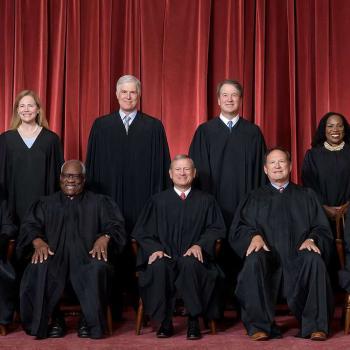Lawmakers were unable to come up with a compromise to keep the federal government open, so it’s shut down. “Essential” government functions, such as those affecting national security, will continue. (I know, I know. . . Why is the government doing things that aren’t essential?) But lots more offices will shut their doors. Most discussion has to do with the number of federal employees who won’t get paid. But there are also the considerable number of private companies that the government owes money to who are going to get stiffed. Since the federal government is the nation’s biggest employer and biggest spender, the economy is going to take a hit. After the jump, a list of what stays open and what gets shut down.
What do you think will happen now? How long will this last? How can it be resolved without either side giving in? Might the general public support a government shutdown this time?
From the Washington Post:
There are a whole bunch of key government functions that carry on during a shutdown, including anything related to national security, public safety, or programs written into permanent law (like Social Security). Here’s a partial list:
— Any employee or office that “provides for the national security, including the conduct of foreign relations essential to the national security or the safety of life and property.” That means the U.S. military will keep operating, for one. So will embassies abroad.
— Any employee who conducts “essential activities to the extent that they protect life and property.” So, for example: Air traffic control stays open. So does all emergency medical care, food-safety inspections, border patrol, federal prisons, most law enforcement, emergency and disaster assistance, overseeing the banking system, operating the power grid, and guarding federal property.
— Agencies have to keep sending out benefits and operating programs that are written into permanent law or get multi-year funding. That means sending out Social Security checks and providing certain types of veterans’ benefits.
— All agencies with independent sources of funding remain open, including the U.S. Postal Service and the Federal Reserve.
— Members of Congress can also stick around, since their pay is written into permanent law. However, many congressional staffers may not get paid without specific appropriations. Many White House employees may also have to go without pay.. . .
Everything else, basically [shuts down]. It’s a fairly long list, and you can check out in detail which activities the agencies are planning to halt in these contingency plans posted by each agency. Here are a few select examples:
Health: The National Institutes of Health will stop accepting new patients for clinical research and stop answering hotline calls about medial questions. The Centers for Disease Control will have a “significantly reduced capacity to respond to outbreak investigations.”
Housing: The Department of Housing and Urban Development will not be able to provide local housing authorities with additional money for housing vouchers. The nation’s 3,300 public housing authorities will not receive payments, although most of these agencies, however, have funds to provide rental assistance through October.
Immigration: The Department of Homeland Security will no longer operate its E-Verify program, which means that businesses will not be able to check on the legal immigration status of prospective employees during the shutdown.
Law enforcement: Although agencies like the FBI and the Drug Enforcement Agency will continue their operations, the Justice Department will suspend many civil cases.
Parks and museums: The National Park Service will close more than 350 national parks and museums, including Yosemite National Park in California, Alcatraz in San Francisco, and the Statue of Liberty in New York. Last time this happened in 1995-1996, some 7 million visitors were turned away. (One big exception was the south rim of the Grand Canyon, which stayed open only because Arizona agreed to pick up the tab.)
Regulatory agencies: The Environmental Protection Agency will close down almost entirely during a shutdown, save for operations around Superfund cites. The Commodity Futures Trading Commission will also shut down. A few financial regulators, however, like the Securities and Exchange Commission, will remain open.
(Small parts of) Social Security: The Social Security Administration will keep on enough employees to make sure the checks keep going out. But the agency won’t have enough staff to do things like help recipients replace their benefit cards or schedule new hearings for disability cases.
Visas and passports: The State Department says it will keep most consulates and embassies open this time around, although some passport and visa processing could be interrupted. (For instance, “if a passport agency is located in a government building affected by a lapse in appropriations, the facility may become unsupported.”)
During the previous shutdown in 1995-1996, around 20,000 to 30,000 applications from foreigners for visas went unprocessed each day. It’s unclear how many might be affected this time around.*
Veterans: Some key benefits will continue and the VA hospitals will remained open. But many services will be disrupted. The Veterans Benefits Administration will be unable to process education and rehabilitation benefits. The Board of Veterans’ Appeals will be unable to hold hearings.
Rep. Rush Holt (D-N.J.) has a list of other possible effects of a shutdown. Funds to help states administer unemployment benefits could get disrupted, IRS tax-refund processing for certain returns would be suspended, new home-loan guarantees could cease, farm loans and payments would stop, and Small Business Administration approval of business loan guarantees and direct loans would likely cease.
Can you give me an agency-by-agency breakdown of the impacts?
Yes. We’ve been compiling a detailed list here at the Post, but here’s a brief overview, showing how many employees are furloughed, and examples of who stays and who goes:
Department of Commerce: 87 percent of the agency’s 46,420 employees would be sent home. (The Weather Service remains, Census Bureau employees go home.)
Department of Defense: 50 percent of the 800,000 civilian employees would be sent home while all 1.4 million active-duty military members would stay on. (Environmental engineers, for instance, get furloughed.)
Department of Energy: 69 percent of the agency’s 13,814 employees would be sent home. (Those in charge of nuclear materials and power grids stay. Those conducting energy research go home.)
Environmental Protection Agency: 94 percent of the 16,205 employees will be sent home. (Those protecting toxic Superfund sites stay. Most regulators get sent home.)
Federal Reserve: Everyone would stay, since the central bank has an independent source of funding.
Department of Health and Human Services: 52 percent of 78,198 employees would be sent home. (Many food regulators will stay, those overseeing mental health programs would go home.)
Department of Homeland Security: 14 percent of the 231,117 employees would go home. (Border Patrol would stay. Operations of E-Verify would cease.)
Department of Housing and Urban Development: 95 percent of the 8,709 employees would go home. (Those in charge of guaranteeing mortgages at Ginnie Mae would stay, as would those in charge of homelessness programs. Everything else would stop.)
Department of Labor: 82 percent of the 16,304 employees would be sent home. (Mine safety inspectors will stay, those working on economic data in the Bureau of Labor Statistics will get furloughed.)
NASA: 97 percent of the 18,134 employees would be sent home. (Employees working on the International Space Station will stay. Most engineers will go home.)
Department of Interior: 81 percent of the 72,562 employees would be sent home. (Wildlife law enforcement officers would stay, but the parks themselves would close.)
Department of Justice: 15 percent of the 114,486 employees would go home. (FBI agents, drug enforcement agents, and federal prison employees would stay. Some attorneys would go home.)
U.S. Postal Service: Everyone would stay, since the Postal Service is self-funded.
Social Security Administration: 29 percent of the 62,343 employees would be sent home. (Claims representatives would stay, actuaries would go home.)
Department of Treasury: 80 percent of the 112,461 employees will be sent home. (Those sending out Social Security checks would stay, IRS employees overseeing audits would go home.)
Department of Transportation: 33 percent of the 55,468 employees will get sent home. (Air traffic controllers will stay, airport inspections will cease.)
Department of Veterans Affairs: 4 percent of the 332,025 employees would go home. (Hospital workers would stay, some workers in charge of processing benefits would go home.)
A much, much more detailed list can be found in the agency contingency plans prepared here.
Federal contractors: Of the $18 billion in federal contracts in the D.C. area back in 1995-1996, about one-fifth, or $3.7 billion, were put on hold during the shutdown. Employees of contractors were reportedly furloughed without pay.
Energy: The Department of Interior would temporarily stop reviewing permits for onshore oil and gas drilling as well as applications for renewable energy projects on public land. The Department of Energy would stop processing applications for liquefied natural gas exports.
Pharma and biotech: This one’s hard to game out. The Food and Drug Administration didn’t have to shut down in 1995 and 1996 because it was already funded. This time around, however, the FDA won’t be spared, and the review process for new drugs might get bogged down. The shutdown could also put a cramp on the grant process from the National Institutes of Health. “If prolonged,” Krueger writes, “that could negatively impact life sciences/diagnostics companies.











